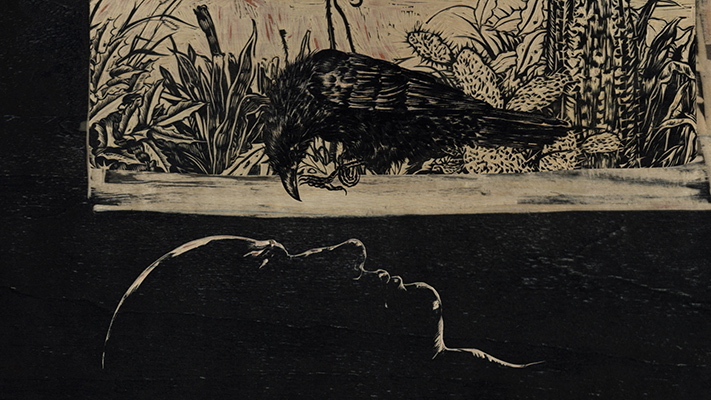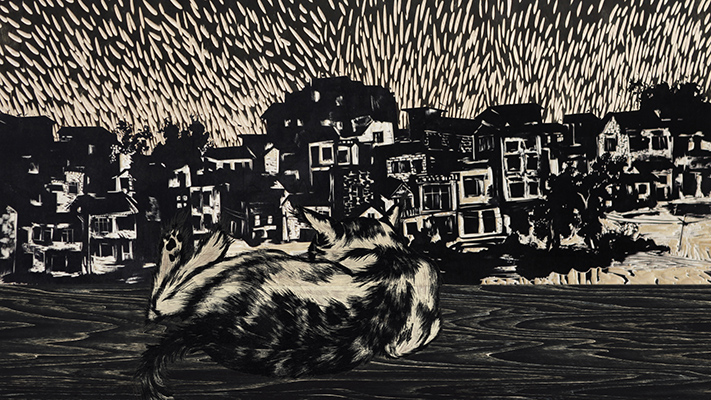The woodcut animation Some Actions Which Haven’t Been Defined Yet In The Revolution depicts the nightmarish journey of a character through a world situated between waking and dreaming, day and night, past and present, in which all known, stable boundaries—such as that between inside and outside, human and beast—have become fluid. Time is dictated by traumatic flashbacks, and the nightmare-like atmosphere of the work, which is underscored by haunting music, is evoked not by violent actions, but by the claustrophobic routines of everyday life. There are two iconic scenes that define the work—one when the protagonist pulls an insect from between his teeth and eats it alive, and the other when the protagonist masturbates. The latter scene is the climax of the film, yet shows an anticlimax of sorts, with its undirected and unfulfilled libidinous energy. The former scene evokes the metaphor of “cannibalism” as an attitude and mental condition, used by the influential author Lu Xun to describe the decay of Chinese consciousness. Lu Xun wrote The True Story of Ah Q. and was, not coincidentally, also an eminent scholar of Chinese woodcuts.
This work is Sun Xun’s first animated film based entirely on woodcuts, a traditional Chinese technique which is more than 2000 years old and which experienced a revival during the Cultural Revolution in the 1960s and 1970s. Is this the revolution and the disconcerted society left in its wake that Sun Xun speaks about? More likely, it is not one specific revolution from among the many revolutions China experienced in the twentieth-century—but the ever-present effects of continuing revolutionary violence, and the surreal underside of “official” accounts of revolutionary reason and propagandistic promise, where revolution appears as sanctioned terror. The work depicts experience of a world turned upside down in which the rationality of irrationality has become the rule.
Sun Xun, born 1980 in China, lives and works in Beijing


